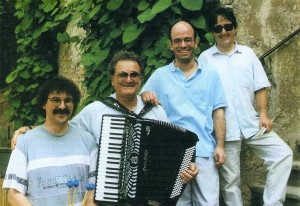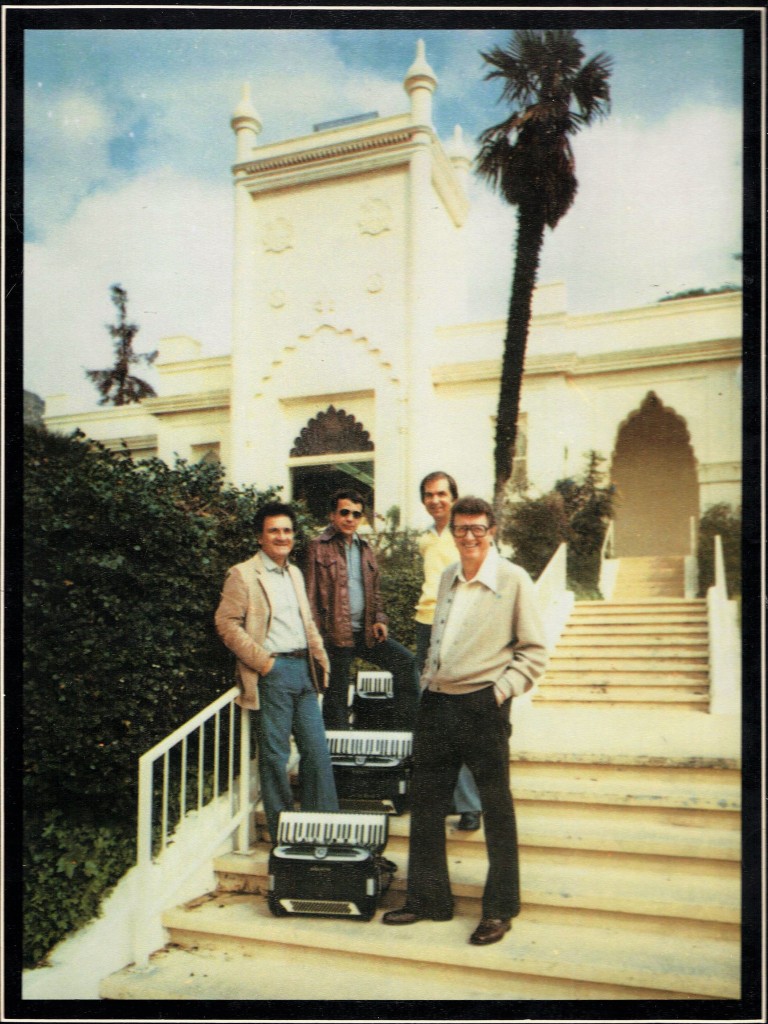
Frank Marocco (January 2, 1931 – March 3, 2012) possessed the holy grail of musicians: an instantly recognizable style. He was particularly graced with a sense of swing that breathed life into any melody that he touched, and a left hand technique that solidly assured the rhythm with a bebop sense of harmony. And if his sound is recognizable, it’s also because his playing appears on several hundred film, television and studio credits!
The path to his musical sound was a product of an era, when the accordion reigned as one of the most popular instruments in America, and was supported by instructors who could maintain this interest at a high level of quality: the golden age of the accordion. Frank’s early training was thus shaped within the accordion culture of the greater Chicago area of the 1940s, and was polished by the great instructor, Andy Rizzo.

The next important feature in the development of Frank’s sound is that years of incessant touring, teaching and demanding studio work provided a firm foundation for an impeccably professional technique. These skills gave Frank a unique voice in his interpretation of the great American songbook, a major source for his performance repertoire.
In the early 2000s, when I was first taking accordion lessons, I discovered Frank Marocco through my accordion teacher. At the same time, Frank seemed to be entering a new phase of his illustrious career, in which he was giving more concerts around the world (instead of being cloistered within the Hollywood studios). This coincided with the rise of YouTube, and I religiously watched each new video featuring Frank. One of my personal favorites was taken from a jazz club appearance in Denmark, in 1984 .
Frank’s recordings are rich and varied in stylistic output. Some personal favorites include:

Jazz on the Road (1988): This is a solo recording made during a visit to the Klingenthal accordion competition in the former East Germany. In this solo context, one can really appreciate how Frank approached the role of the left hand ‘Stradella’ system, making it a unique accompanist to the melody. For me, the recording of Clare Fischer’s ‘Morning’ really stands out on this occasion, in which we can clearly hear 3 distinct yet simultaneous lines during the theme.
Ballad for Anne (1989): The sound of electric accordions may seem dated at first, but this compilation album rewards the listener with a modern approach to jazz accordion. ‘All The Things You Are’ (1980) features the odd pairing of bassoon (Ray Pizzi) with Frank playing organ and walking bass lines on his electric accordion. Another compilation CD, ‘Brazilian Waltz’ (1988), is similar in scope and instrumentation.
Art Van Damme and Friends (1979): This is another recording with odd instrumentation. Here we have an interesting concept from the accordion designer and craftsman Julio Giulietti: a big band jazz sound recreated using accordions voiced like different orchestra sections. In this case, we find Frank on “bass accordion” and Kenny Kotwitz on “cello accordion”, backing up Art van Damme on a more conventional lead accordion. The intense, interweaving accordion parts shine on the Van Damme piece ‘Let Yourself Down’. (Although a typical Van Damme instrumentation uses guitar or vibes, here Pete Jolly, another great accordionist, is featured on electric piano.) The idea of a jazz accordion orchestra was notably also used by Leon Sash, with Gerry Brown and Jerry Cigler.

Frank passed away in 2012. One of his later film score dates was for Pixar’s Ratatouille, which includes exceptional “fills” on ‘Le Festin’ in which Frank achieves a very warm, smooth sound on his Giulietti accordion.
